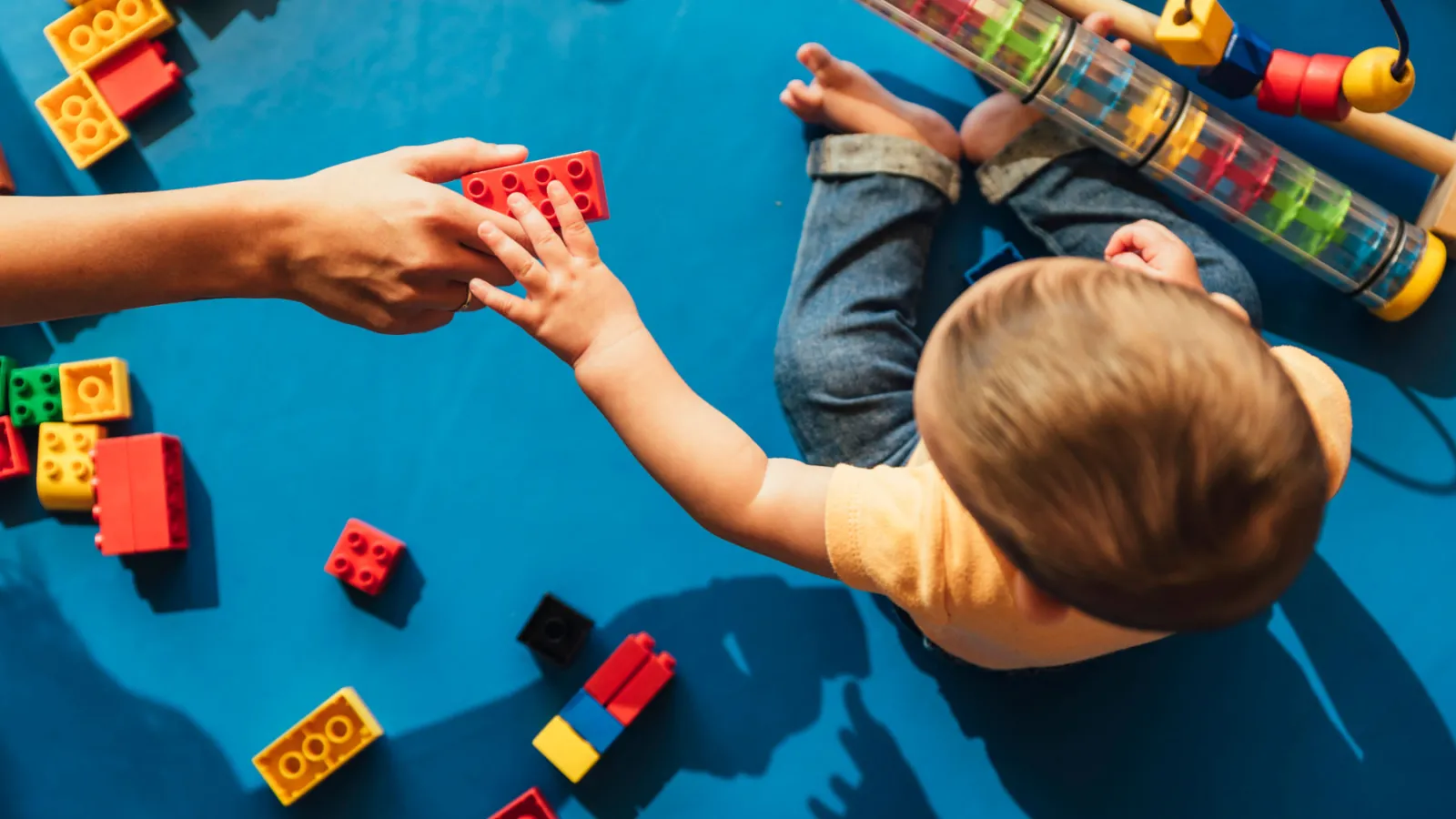Banner

Title
resources
Resource Library
Our Resource Library contains materials and assistance for early childhood educators and those they serve. Explore our selection of podcasts, tip sheets, websites, documents, and self-study courses.
Results: Page 19 of 213
| Resource Name | Description | Resource Type |
|---|---|---|
| Assure the Best for Your Baby's Physical Development | As a parent, you know your child best. It is important for you to learn what early milestones are expected while your baby is growing. Inside this brochure, a unique chart allows you to track your child's physical development. It begins at 3 months of age and continues to 15 months. Periodically review the information on the chart, and place a check mark next to the signs you see in your baby. | Document |
| Assuring the Family's Role on the Early Intervention Team | This paper is a synthesis of practices and ideas for explaining procedural safeguards to families, which assure that families are fully informed in ways that support their role in the early intervention process. The authors solicited information about practices and ideas for explaining procedural safeguards to families from early childhood projects funded by the Office of Special Education Programs of the U.S. Department of Education and from the state lead agencies for Part C. The paper includes a step-by-step model of explaining procedural safeguards that parallels the early intervention process. The authors intend to explore the implications of procedural safeguards for families, but not to analyze the Part C safeguards themselves. The paper has been developed for state Part C leaders, service providers, families, family advocates, and especially for those people who are involved in explaining procedural safeguards to families. | Document |
| Asthma | Asthma is a leading chronic illness among children in the United States, with millions of asthma sufferers under the age of 18. Children living below the poverty level and children who are Black, American Indian, or Alaska Native have higher rates of asthma. Asthma is a leading cause of missed school days. It can disrupt a child’s sleep, ability to concentrate, memory, and participation in program activities. Early childhood programs can partner with health care providers and families to reduce children’s exposure to triggers, recognize early warning signs, promptly treat asthma symptoms, and prevent asthma episodes. Learn more from HeadStart.gov. | Website |
| Asthma | Information of the definition, symptoms and treatment of asthma in young children. | Tipsheet |
| Asthma and Allergy Foundation of America | The Asthma and Allergy Foundation of America (AAFA) website provides information and support for people with respiratory needs. The AAFA foundation offers grant opportunities, research publications, education programs, family support, public awareness, and public advocacy. A newsletter and training resource materials are available through the website. | Website |
| At-Home Activity Guide | "Play promotes healthy development, even when you're stuck at home." Here is a guide from Zero to Three. | Website |
| At-home TIPS to make the most of everyday moments with your toddler | Everyday routines with your toddler can be more than “routine.” Whether it is mealtime, play time, or bedtime - turn everyday moments with your toddler into valuable, brainbuilding moments.Check out this great tip sheet from Child Care Aware of America and Vroom™.*Also available in Spanish | Document |
| Attachment and Child Care Relationships | In Part 2 of our series on attachment, Beth Menninga and Dr. Mary Harrison discuss how early childhood educators can promote strong relationships between caregivers and very young children through responsive, consistent caregiving. | Podcast |
| Attachment and Exploration | Part 3 of our series on attachment continues the conversation about responsive caregiving practices, with a focus on the importance of providing a secure base for infants and toddlers as they begin to explore the world. | Podcast |
| Attachment in Early Care and Education Programs | Strategies to promote responsive relationships with- and provide quality care for infants and toddlers. | Tipsheet |
Results: Page 19 of 213